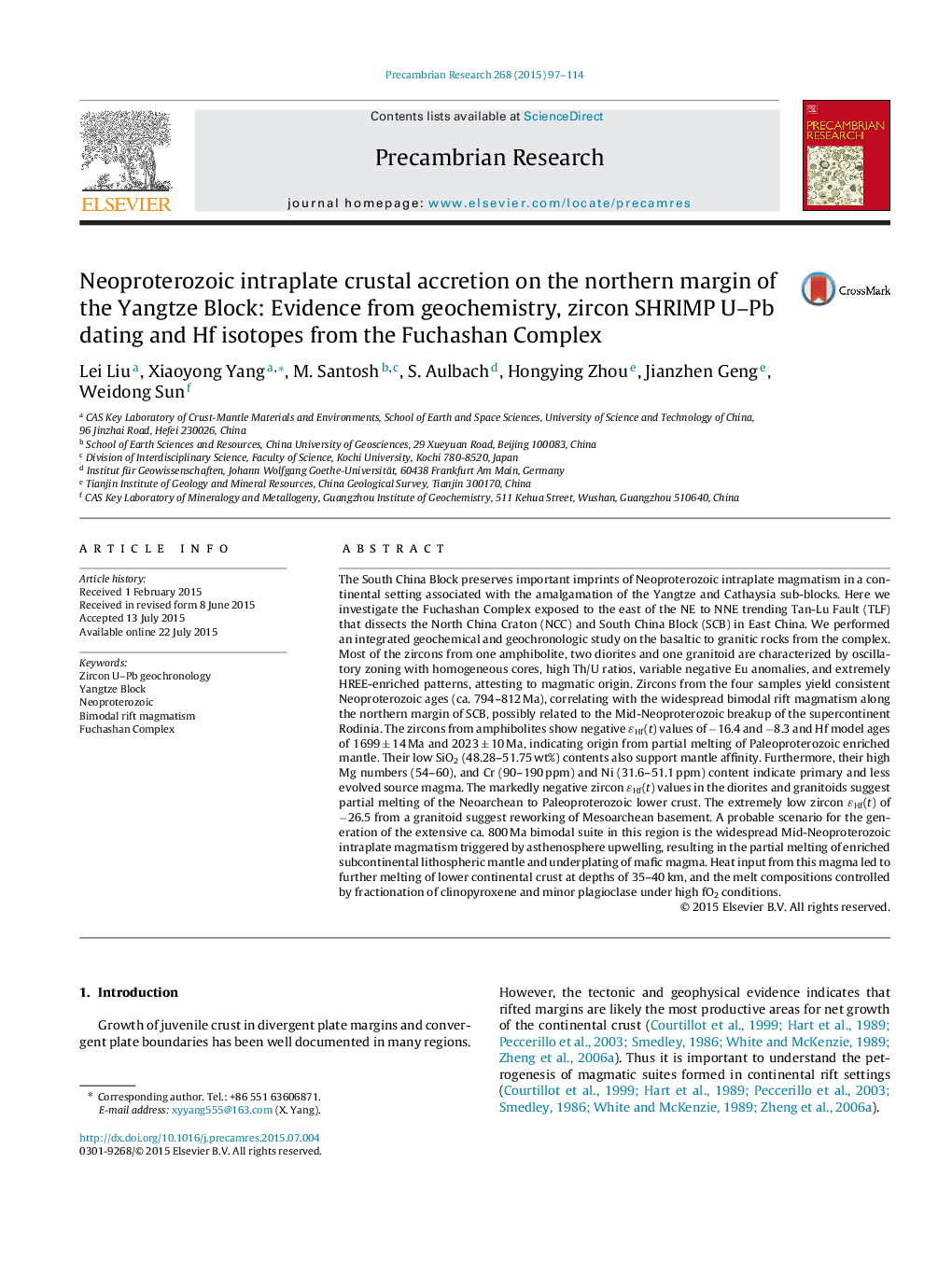| کد مقاله | کد نشریه | سال انتشار | مقاله انگلیسی | نسخه تمام متن |
|---|---|---|---|---|
| 4722631 | 1639607 | 2015 | 18 صفحه PDF | دانلود رایگان |

• Juvenile crust formation from metasomatized subcontinental lithospheric mantle through rift-related bimodal magmatism.
• The extremely low zircon ɛHf(t) values of up to −26.5 indicate the presence of crustal rocks older than 3.2 Ga in the basement.
• Arc signatures in amphibolites reflect protolith inheritance; magma generation correlated to intraplate setting.
The South China Block preserves important imprints of Neoproterozoic intraplate magmatism in a continental setting associated with the amalgamation of the Yangtze and Cathaysia sub-blocks. Here we investigate the Fuchashan Complex exposed to the east of the NE to NNE trending Tan-Lu Fault (TLF) that dissects the North China Craton (NCC) and South China Block (SCB) in East China. We performed an integrated geochemical and geochronologic study on the basaltic to granitic rocks from the complex. Most of the zircons from one amphibolite, two diorites and one granitoid are characterized by oscillatory zoning with homogeneous cores, high Th/U ratios, variable negative Eu anomalies, and extremely HREE-enriched patterns, attesting to magmatic origin. Zircons from the four samples yield consistent Neoproterozoic ages (ca. 794–812 Ma), correlating with the widespread bimodal rift magmatism along the northern margin of SCB, possibly related to the Mid-Neoproterozoic breakup of the supercontinent Rodinia. The zircons from amphibolites show negative ɛHf(t) values of −16.4 and −8.3 and Hf model ages of 1699 ± 14 Ma and 2023 ± 10 Ma, indicating origin from partial melting of Paleoproterozoic enriched mantle. Their low SiO2 (48.28–51.75 wt%) contents also support mantle affinity. Furthermore, their high Mg numbers (54–60), and Cr (90–190 ppm) and Ni (31.6–51.1 ppm) content indicate primary and less evolved source magma. The markedly negative zircon ɛHf(t) values in the diorites and granitoids suggest partial melting of the Neoarchean to Paleoproterozoic lower crust. The extremely low zircon ɛHf(t) of −26.5 from a granitoid suggest reworking of Mesoarchean basement. A probable scenario for the generation of the extensive ca. 800 Ma bimodal suite in this region is the widespread Mid-Neoproterozoic intraplate magmatism triggered by asthenosphere upwelling, resulting in the partial melting of enriched subcontinental lithospheric mantle and underplating of mafic magma. Heat input from this magma led to further melting of lower continental crust at depths of 35–40 km, and the melt compositions controlled by fractionation of clinopyroxene and minor plagioclase under high fO2 conditions.
Journal: Precambrian Research - Volume 268, October 2015, Pages 97–114